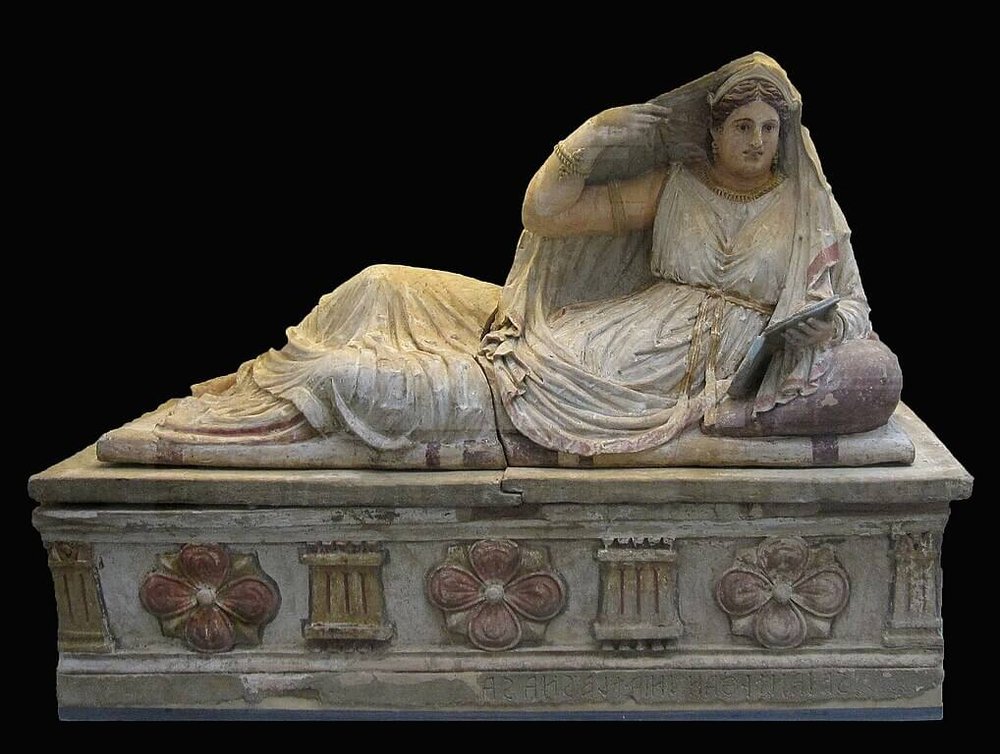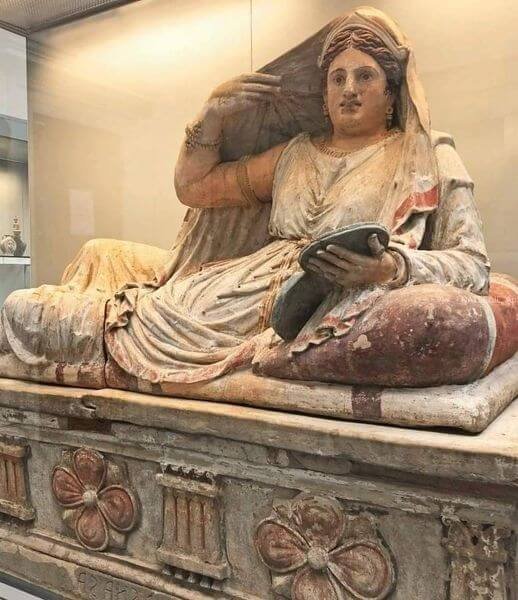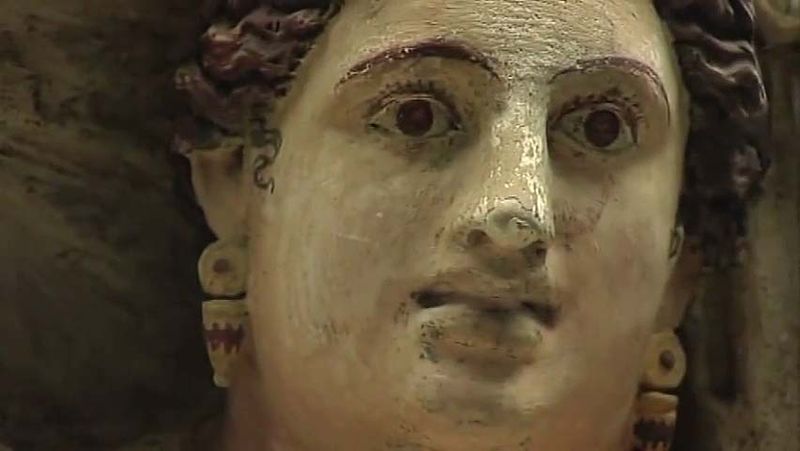The brightly painted terracotta sarcophagus of Seianti Hanunia Tlesnasa, an Etruscan noblewoman, is a remarkable artifact from ancient Tuscany (circa 150-140 BC). Discovered in Poggio Cantarello, this sarcophagus embodies the artistic sophistication and cultural values of the Etruscan elite, providing insights into their social customs and burial traditions.
Table of Contents
ToggleAn Icon of Status and Identity
Seianti’s name is inscribed in Etruscan on the base, affirming her identity and status within her community. Such personalization reflects Etruscan reverence for family lineage and the individual’s legacy. The detailed craftsmanship of the sarcophagus, likely commissioned by an affluent family, indicates her significant position in society.

Masterful Artistry in Design
The depiction of Seianti reclining on a soft mattress with a cushion demonstrates artistic finesse. She is dressed in an ornate gown with intricate drapery, adorned with a tiara, necklace, bracelets, and earrings—all symbols of high status. Holding a mirror in one hand while adjusting her cloak with the other, Seianti’s lifelike pose captures a moment of elegance, bringing depth to her character and hinting at her social standing.

Insight into Etruscan Funerary Beliefs
Inside, the skeletal remains matched the portrayal: a woman aged approximately 50-55, as depicted in her serene expression and graceful form. This careful alignment of physical reality and artistic portrayal highlights the Etruscan belief in preserving individual identity in the afterlife. Funerary art like this sarcophagus shows how the Etruscans revered both the personal and social aspects of those they honored.

Archaeological and Cultural Significance
The sarcophagus of Seianti Hanunia Tlesnasa provides invaluable insight into Etruscan society, where art and burial practices emphasized identity, heritage, and status. This artifact allows researchers to glimpse the Etruscans’ unique approach to life, death, and remembrance, highlighting a culture deeply rooted in the appreciation of individuality and legacy.

